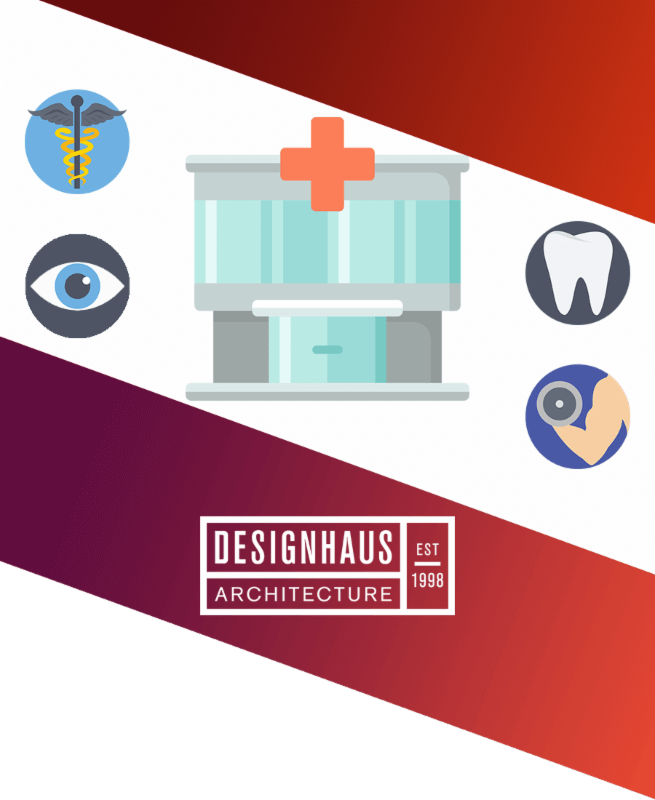
Doctors are here to take care of our health while architects draw building plans, right? Webster’s defines the word health as such, “freedom from physical disease or pain.” According to The Architect’s Handbook of Professional Practice, the mantra of the architect regarding his or her prime directive and the underlying objective is to protect and improve upon the health, safety, and welfare of the public. It is the individual’s choice or the ability of the architect to produce “pretty designs” or not, but it is not a choice to protect your health. Failing to do so is a quick way to lose one’s license. So yes, doctors and architects have this in common at the core of their ideologies. Health and architecture can be discussed through the lens of building use or design philosophy. I had no intention of writing a boring blog about how architects design really cool hospitals and wellness spas. You can google “healthcare buildings.” I want to delve into health, not healthcare. Every building is fundamentally a reaction to public health, from the train station to the warehouse to the parking garage.
The mantra of the profession of architecture is this: All architecture begins with the word health. How and why did we begin to think of buildings as promoting “freedom from physical disease and pain?” The answer to that question goes back to primitive times. In Primitive Hut, a writing by Marc-Antoine Laugier (1713-1769), a French Jesuit priest opined about the primitive hut as the foundation of all architecture. Of course, this hut was the rudimentary first attempt to do nothing but protect health, safety, and welfare. Protection from predators, the elements, the preservation and preparation of food, the production and storage of goods are all the foundation of architectural thought and the impetus to advance civilized man. Laugier goes on to express his objection to heavily ornamented Renaissance architecture versus the purer Greek works of Athens, as a waste of resources better spent on fundamental societal needs. He believed all ornamentation evolved from the primitive hut, but the interpretations had gone too far and begun to violate our oath to simply promote health and began to promote unhealthy excess. For example, in pre-recorded history, a bundle of reeds is bound and used to support a large horizontal overhead branch. The compression of that branch on the reeds flares the reeds at the top. More tree limbs are assembled to shed rain in the form of a gable, then covered in flitches of bark. To this very day, you are surrounded by the interpretations of this hut whether you know it or not, be them Laugier-approved or excessively brash. In fact, there is no practical rationale for a “classical” column as used on the White House, a rounded crown molding, or a panelized door. There is no rationale for hut-inspired ornament whatsoever, except homage to the primitive hut itself. Traditionalists would argue that the homage itself is the promotion of health, albeit social and emotional, as it binds us to our ancient beginnings as a species.
Every building is fundamentally a reaction to public health, from the train station to the warehouse, to the parking garage.
Modernists, beginning with the Bauhaus movement of the early 1900’s, argue that honest use of materials produces its own true ornament, without the capricious historical references and therefore promotes emotional health through clarity, simplicity and contemporary knowledge. You are also confronted by this contrary philosophy in your daily environment.
To this day there is a fiery conflict between more garish designers and the modernists over who is better for the public health, further discussed in a pro-modernist 20th-century book called Ornament is Crime. Extreme modernists would argue that some architects are in violation of their own oath. Of course, the other side of the debate is that traditional architects that produce golden gilded palaces claim that modernists fail to spiritually inspire the public with their overly simple white boxes and ubiquitous mirrored glass towers, numbing society into some unhealthy Orwellian daze. Designers of the ornamented buildings need only refer the modernists back to the 15 BC writings of Vitruvius, in which he lays out the triad principal of architecture coined, “commodity, firmness, and delight,” under which the architect can distribute these three fundamentals. Architecture promotes a healthy society only when all three fundamentals are applied. The traditionalists are blamed for overdosing on “delight,” while the modernists minimally fulfill “commodity.” Ironically, both sides portray the “firmness” to protect us at the rudimentary and primary objectives of the Primitive Hut. Needless to say in all forms of art, the greatest architects in history ride the very fine line between these extremes.
This philosophical battle will rage forever, but it should provide some perspective on how it is that architecture and health are forever intertwined. The essence of this theoretical debate is that it is personal. Architects, like doctors, are here to protect people’s health. This is true. Architects also strive to promote health through inspiration that is physically experienced by a building occupant’s emotional response to space. Architects simply disagree on the forms, materials, and spaces that are most effective to inspire. This is a healthy conflict as it promotes experimentation, enthusiasm, debate and diversity throughout our built environment. The environments YOU choose to live, work and play in have the power to do more for your health than you know.
Thank you for your interest and for taking the time to read this newsletter. Stay tuned for more blogs and emails about our work at Designhaus.
BY PETER M STUHLREYER, AIA, CEO

